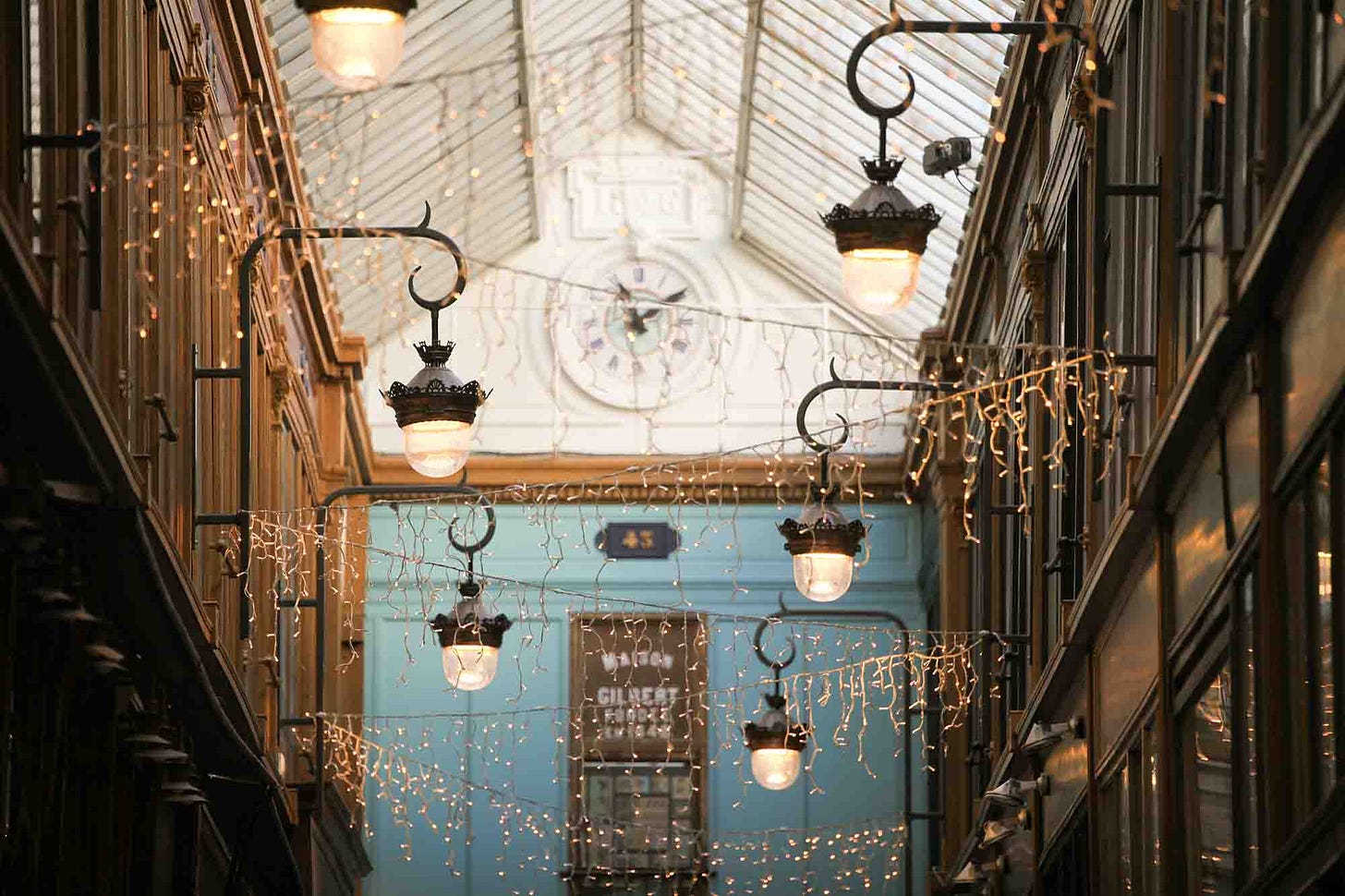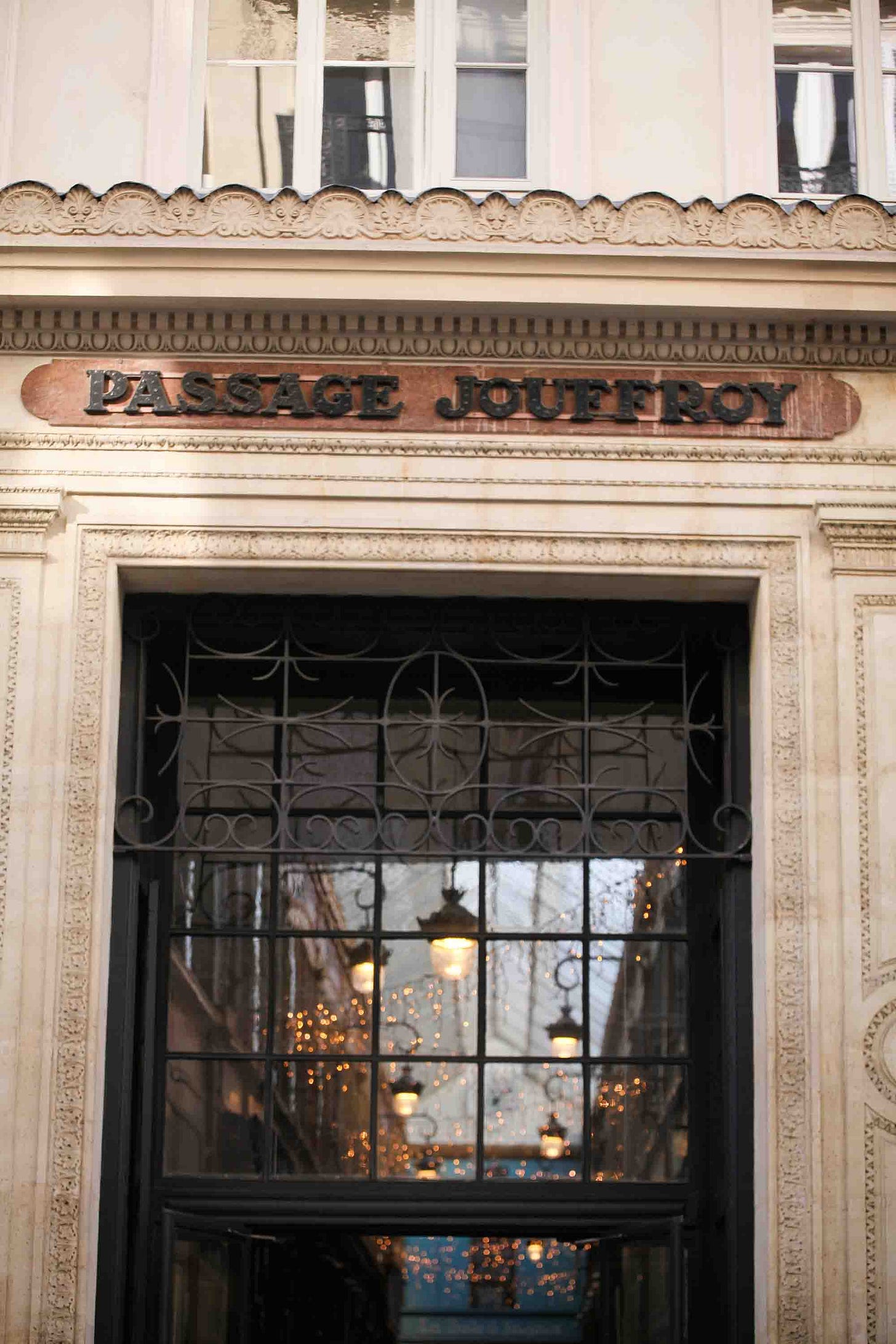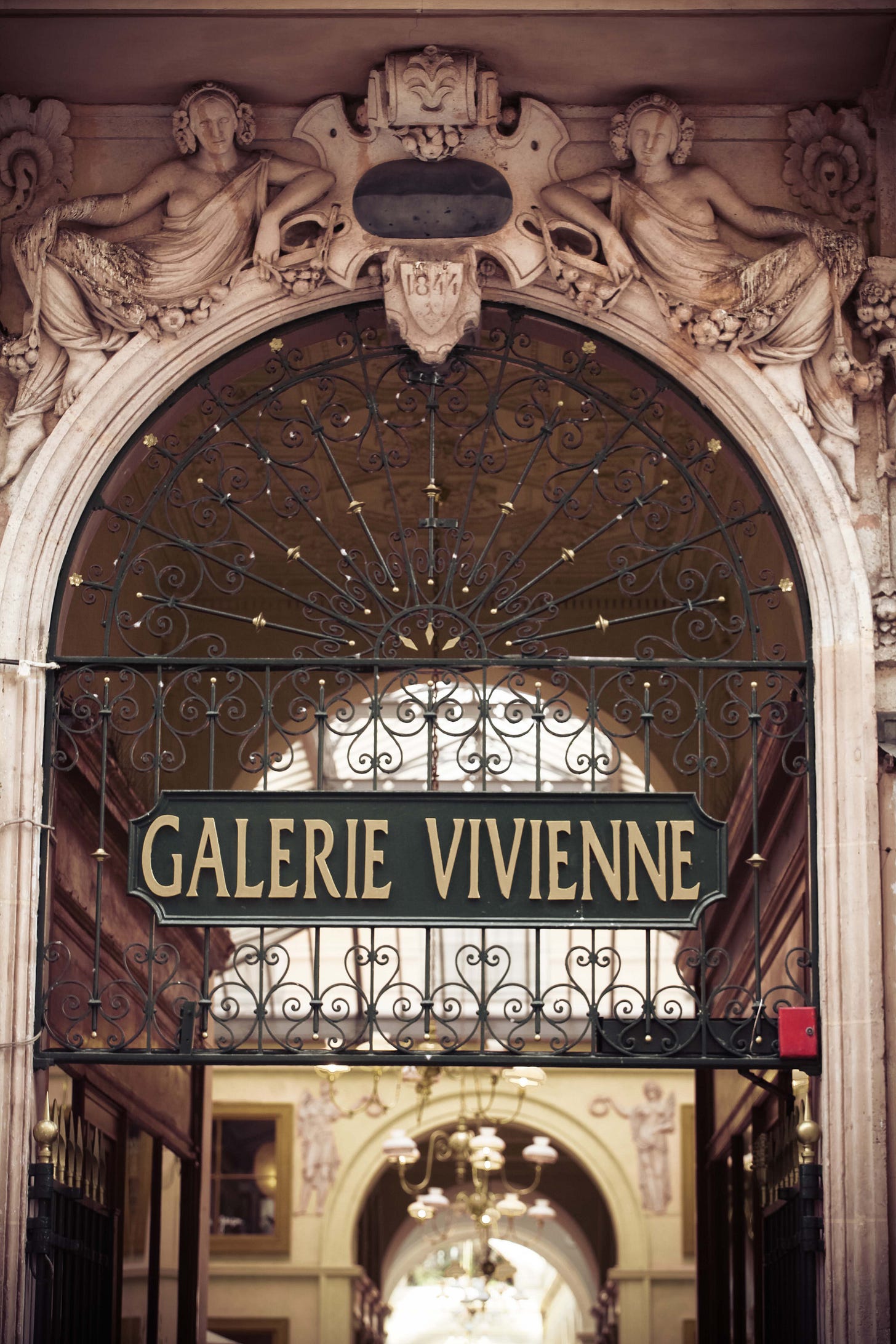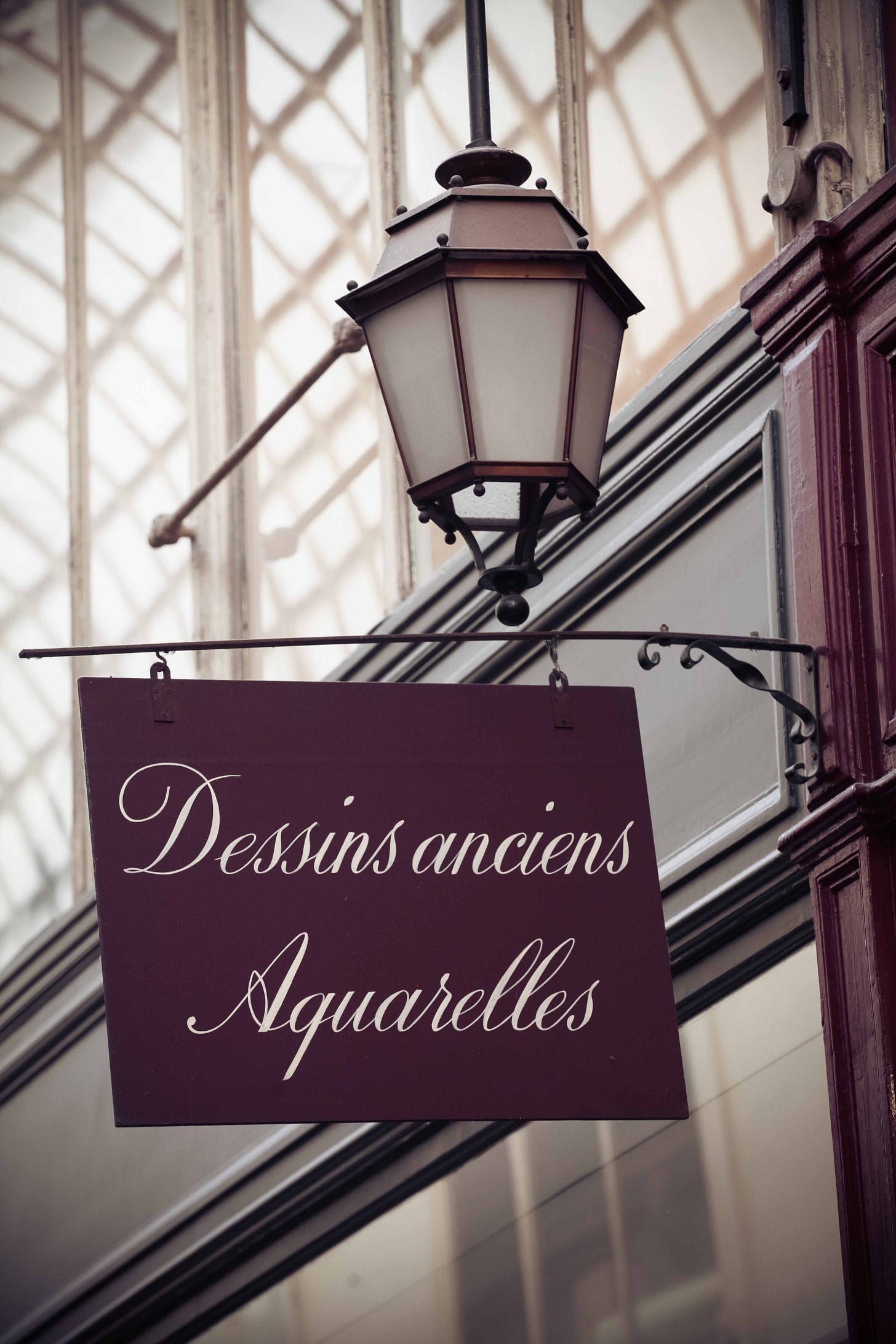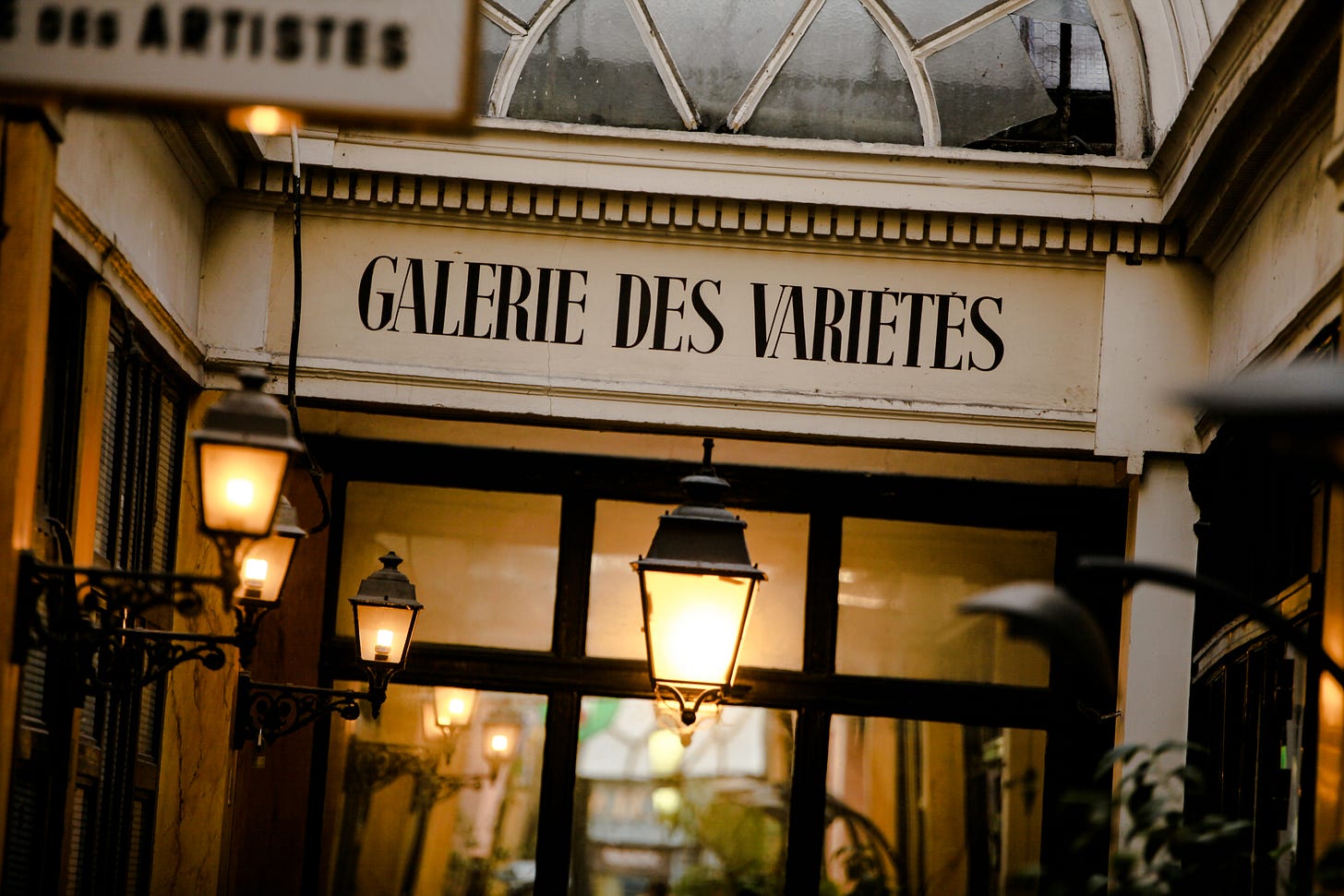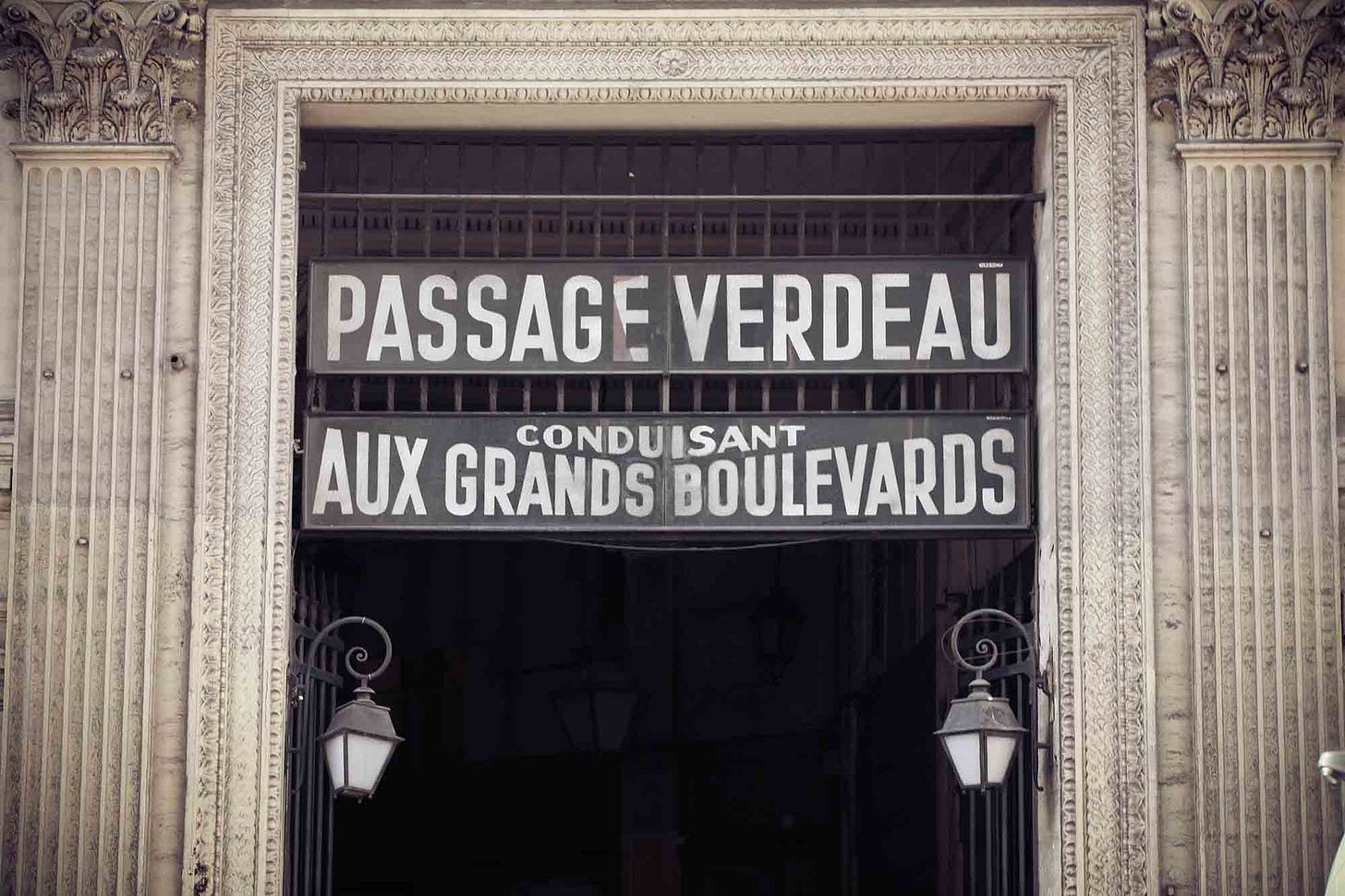I still remember the first time I ducked into a Paris passageway to escape a sudden downpour. I had been wandering near the Grands Boulevards, camera slung over my shoulder, when the sky turned a moody grey and cracked open without warning. I dashed under an archway, my shoes squeaking on the marble floor, and found myself somewhere between a time machine and a miniature city within the city , a glass-roofed tunnel lined with flickering shop windows, vintage booksellers, and the faint aroma of roasted coffee drifting from a tiny café at the corner.
That passage was Galerie Vivienne , and from that moment, I was hooked.
Paris has no shortage of secrets, but its covered passages are among the most enchanting. Tucked between Haussmannian boulevards and hidden behind discreet entrances, these 19th-century arcades once offered Parisians shelter from mud, rain, and the chaos of the streets. They were the ancestors of modern shopping malls, but they feel nothing like them: more intimate, more poetic, more human in scale.
Back then, gas lamps flickered above polished mosaic floors. The well-heeled would stroll past tailors, milliners, and booksellers, brushing shoulders with poets and flâneurs who lingered in cafés debating politics and art. Many passages have disappeared , there were over 150 at their peak , but a handful still survive, as fragile yet enduring as pressed flowers in a book
.
Galerie Vivienne: The Queen of Passages
If you visit only one, make it Galerie Vivienne. Built in 1823, it’s a jewel box of patterned tiles, elegant rotundas, and glass ceilings that flood the corridor with soft daylight. Step inside and you’re greeted by a hush that feels miles away from the city’s roar. Here, you can browse old maps at Librairie Jousseaume, pick up a silk scarf at Wolff & Descourtis, or sip tea under gilded archways at A Priori Thé.
It’s a place to drift slowly. Even if you don’t buy anything, you leave with something intangible , a sense of having touched a different century, however briefly.
Passage Jouffroy & Passage Verdeau: A Vintage Dream
Cross the boulevard and you’ll find Passage Jouffroy, opened in 1847. It’s brighter and livelier than Vivienne, a little more democratic. Its charm lies in its mix: toy shops and antique print sellers, old canes and walking sticks in dusty shopfronts. At one end sits the Musée Grévin, Paris’s delightfully kitschy wax museum — a reminder that these arcades have always blended culture and commerce, whimsy and daily life.
Continue on to Passage Verdeau, Jouffroy’s quieter sister. Here, I once spent an entire rainy afternoon flipping through stacks of vintage postcards and yellowed photographs — tiny frozen moments of old Paris, sold for a few euros apiece. If you love the thrill of discovering forgotten treasures, Verdeau will reward your patience.
Why They Still Matter
It would be easy to treat the passages as relics , beautiful but obsolete. But they’re alive, in subtle ways. You feel it in the hush of footsteps echoing on stone floors, in the faded shop signs, in the gentle glow of natural light on antique books. They remind us that cities don’t have to be purely functional , they can be poetic, too. They can shelter small dreams as well as grand ones.
In a time when so many streets look the same from Tokyo to Toronto, these arcades offer a little resistance: proof that the soul of a city can hide behind an unassuming doorway. You just have to be curious enough to push it open.
A Small Invitation
Next time you’re in Paris, I hope you’ll take a detour through one of these glass-roofed passages. Step off the main street, slow your pace, and let the 19th century wrap around you like a forgotten melody. Maybe it will be raining. Maybe you’ll find an old book that changes your day, or maybe you’ll find nothing at all except a moment of quiet beauty.
And maybe , like me, you’ll never quite get over that first passageway, and you’ll keep looking for the next hidden door, the next secret corridor. Because in Paris, there’s always another one waiting.





